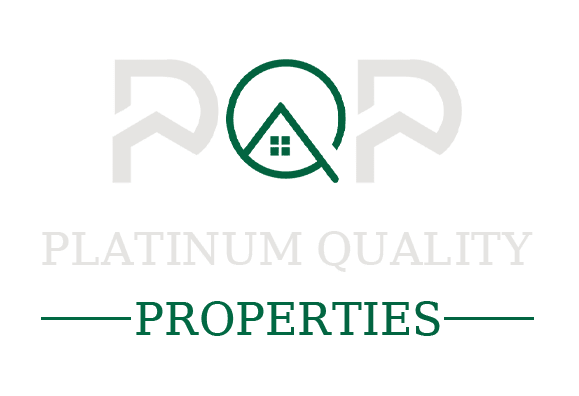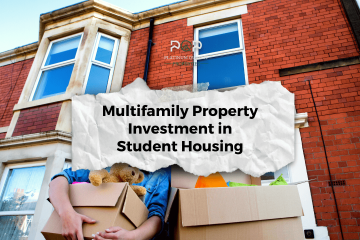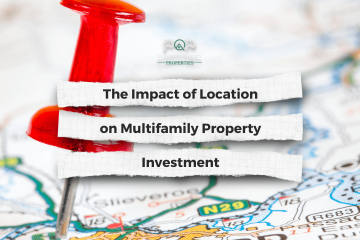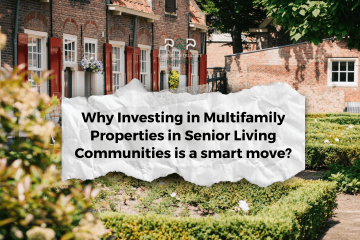Are you considering investing in multifamily properties but feeling overwhelmed by the prospect of financing your investment?
Don’t worry, you’re not alone.
Financing your investment is a critical part of the process, and there are many options available to help you achieve your financial goals.
As a real estate investor, one of the most important aspects of investing in multifamily properties is understanding the various financing options available. Multifamily property investment can be quite lucrative, but it often requires significant capital upfront. Fortunately, there are a number of financing options available that can help investors acquire these properties and achieve their financial goals.
In this blog, we’ll explore some of the most common financing options for multifamily property investment, including traditional bank loans, private financing, government-backed loans, and more. We’ll also discuss some of the pros and cons of each option to help investors determine which is the best fit for their specific needs.
Traditional Bank Loans
One of the most common ways to finance a multifamily property investment is through a traditional bank loan. These loans are typically offered by banks and other financial institutions and require borrowers to meet certain credit and income criteria. In general, traditional bank loans for multifamily properties are secured by the property itself, meaning that the lender can take possession of the property in the event that the borrower defaults on the loan.
One of the advantages of traditional bank loans is that they often offer lower interest rates than other types of financing. Additionally, they can be a good option for investors who have strong credit scores and income histories, as these factors can help to lower the interest rate on the loan.
However, traditional bank loans can also have some disadvantages. For one, they can be difficult to qualify for, especially if the borrower has a less-than-perfect credit score or income history. Additionally, traditional bank loans may require a significant down payment, which can be a barrier for some investors.
Private Financing
Another option for financing multifamily properties is through private financing. Private financing typically involves borrowing money from a private individual or group of investors rather than a traditional financial institution. In many cases, private financing can be easier to qualify for than a traditional bank loan, as the lender may be more willing to overlook certain credit or income issues in exchange for a higher interest rate.
One of the benefits of private financing is that it can be a good option for investors who are looking to move quickly on a property. Because private lenders are often more flexible than banks or other financial institutions, they may be able to approve and fund a loan more quickly than a traditional lender.
However, private financing can also come with some risks. For one, private lenders may charge higher interest rates than traditional banks or financial institutions, which can increase the overall cost of the loan. Additionally, private lenders may require a significant amount of collateral, which can be a risk for investors if the property does not perform as expected.
Government-Backed Loans
Another option for financing multifamily properties is through government-backed loans. These loans are typically offered by government agencies such as the Federal Housing Administration (FHA) and the Department of Housing and Urban Development (HUD). In general, government-backed loans are designed to make it easier for investors to acquire and finance multifamily properties, particularly those that provide affordable housing to low- and moderate-income residents.
One of the advantages of government-backed loans is that they often offer more flexible credit and income requirements than traditional bank loans. Additionally, these loans can be a good option for investors who are looking to acquire properties that are in need of significant repairs or renovations, as they often offer rehabilitation financing.
However, government-backed loans can also have some disadvantages. For one, they can be more complex and time-consuming to apply for and obtain than other types of financing. Additionally, they may require higher down payments than other types of loans, which can be a barrier for some investors.
Seller Financing
Another option for financing multifamily properties is through seller financing. Seller financing involves the property owner financing the sale of the property to the buyer. In general, seller financing can be a good option for investors who are having trouble obtaining traditional financing or who want to avoid the strict requirements of traditional lenders.
One of the benefits of seller financing is that it can be a more flexible option than other types of financing. The terms of the loan can be negotiated between the buyer and seller, which can be a good option for investors who need more flexibility in their financing options.
However, seller financing can also have some drawbacks. For one, the interest rates on seller-financed loans can be higher than traditional bank loans. Additionally, seller financing can be risky for investors if the property does not perform as expected, as the seller may be more likely to take possession of the property if the buyer defaults on the loan.
Crowdfunding
Crowdfunding is a relatively new financing option that has gained popularity in recent years. Crowdfunding involves a group of investors pooling their money together to finance a project, in this case, a multifamily property investment. In general, crowdfunding can be a good option for investors who are looking to invest in multifamily properties but do not have the capital to do so on their own.
One of the benefits of crowdfunding is that it can provide access to capital that might not otherwise be available to investors. Additionally, crowdfunding can be a good way to spread the risk of the investment across multiple investors, which can help to reduce the overall risk of the investment.
However, crowdfunding can also have some disadvantages. For one, it can be difficult to find the right crowdfunding platform and to attract investors to the project. Additionally, crowdfunding platforms may charge fees and take a percentage of the profits, which can reduce the overall return on the investment.
In conclusion, there are a number of financing options available for investors looking to invest in multifamily properties. Each option has its own advantages and disadvantages, and investors should carefully consider their options before making a decision. Traditional bank loans can offer lower interest rates but can be difficult to qualify for, while private financing can offer more flexibility but can come with higher interest rates. Government-backed loans can provide more flexible credit and income requirements but can be more complex and time-consuming to obtain. Seller financing can offer more flexibility but can be risky, while crowdfunding can provide access to capital but can be difficult to attract investors.
Ultimately, the best financing option for a multifamily property investment will depend on the individual investor’s specific needs and circumstances. By carefully considering their options and working with a trusted real estate professional, investors can make informed decisions that will help them achieve their financial goals.




